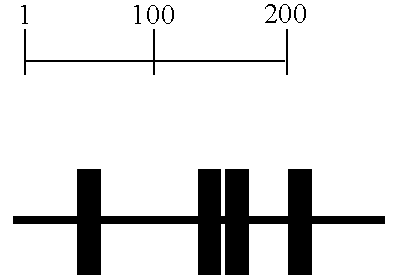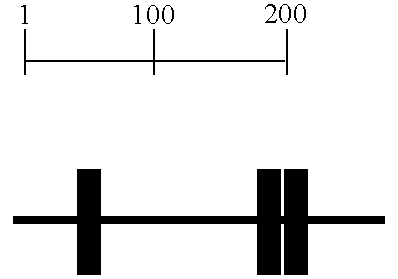Novel gene targets and ligands that bind thereto for treatment and diagnosis of colon carcinomas
a colon carcinoma and gene target technology, applied in the field of neoplastic disease identification of gene targets, can solve the problems of inability to prevent or treat cancer, no other systemic or adjuvant therapy is available, and the molecular genetics of carcinogenesis is not understood, and colorectal cancer will remain a deadly disease for a majority of patients
- Summary
- Abstract
- Description
- Claims
- Application Information
AI Technical Summary
Benefits of technology
Problems solved by technology
Method used
Image
Examples
example 1
Identification of CICO1-CICO3 Genes
[0192] Through a collaboration with Analytical Pathology Medical Group (at Grossmont Hospital), IDEC obtained pairs of snap frozen normal and malignant colon tissue removed during surgery. RNA was extracted from 10 pairs of those samples and submitted for GeneTag analysis at Celera / Applied Bio Systems (ABI). In brief, the RNA was reverse transcribed into cDNA, digested with a restriction enzyme, and linkers were ligated to the cDNA library. The library was amplified using the linker sequences as a primer with an additional nucleotide (A, T, G, or C) (+1 PCR) to generate 16 libraries. The libraries were further amplified using the linker sequences as primers with an additional two nucleotides (+2 PCR) to generate 256 libraries. Fluorescently labeled products from these +2 PCR reactions were separated by capillary electrophoresis and the amplified sequences were quantitated. The expression profile obtained from malignant colon RNA was compared to th...
example 2
Identification of Candidate Genes 14
[0196] Four DNA sequences were identified as being overexpressed in colon carcinoma using the Gene Logic (Gaithersburg, Md.) Gene Express Oncology Datasuite. The sequences were identified in a datasuite search, which compared gene expression in colon tumors with expression in normal tissues. These sequences represent genes and encode antigens which are targets for colon cancer therapeutics.
[0197] The nucleotide sequences of each candidate gene are listed below. The first sequence listed for each candidate gene was obtained directly from the public NCBI database (www.ncbi.nlm.nih.gov) and corresponds to the GENBANK Accession No. number listed in the Gene Logic database. Additional sequence information was obtained by sequencing EST clones corresponding to each candidate gene.
Candidate 1: GENBANK Accession No. W91975(SEQ ID NO:17)W91975 / IMAGE Clone 415310 3′ mRNA SequenceGGCTTCTAAGGTACATTATGTTTTACTTTAATAAATAAAAATTAACTTGAAGAAAAATGCAGNGCCCTATTTAAT...
example 3
[0206] Using the same technology employed in Example 1 to identify the CICO genes, the following sequences were identified as differentially expressed in colon cancer:
bs421ms433-258
[0207] At the +2 PCR stage, bs421ms433-258 was found to be overexpressed in malignant colon compared to normal colon (FIG. 1). This peak was purifed and amplified by PCR using the linkers with three additional nucleotides (+3 PCR). The +3 peaks were purified and sequenced.
(SEQ ID NO:33)bs421ms433-258 Nucleotide SequenceGATCTCACTCAGCAGACAGCAGCAGCCCGGGAGCCTGAGCTCAGGAGGAACTCTTACCTGGAAATTGGGAACTGTATGGAGACTCCAAACTGACTTCTTTCAAAAAACAAAAACAAAAAATTTTTTTAGCTTTGACAAACACACAAAAGTGGTAATAAAGAGAGCCCTCCTTGTCAACCCAAAATGTGAGCCCCCTGTGGCAAAACCACCCCCTACCCCATTA
[0208] These bases correspond to the 3′UTR and some of the final coding exon of the hypothetical protein bK175E3.C22.6, the sequence of which is set forth below:
(SEQ ID NO:34)bK175E3.C22.6 Nucleotide Sequencecggccgcggggcccggcgcggcgcgggccaaggagacggcgttcgtggaggtggtgc...
PUM
| Property | Measurement | Unit |
|---|---|---|
| pH | aaaaa | aaaaa |
| temperatures | aaaaa | aaaaa |
| nucleic acid | aaaaa | aaaaa |
Abstract
Description
Claims
Application Information
 Login to View More
Login to View More - R&D
- Intellectual Property
- Life Sciences
- Materials
- Tech Scout
- Unparalleled Data Quality
- Higher Quality Content
- 60% Fewer Hallucinations
Browse by: Latest US Patents, China's latest patents, Technical Efficacy Thesaurus, Application Domain, Technology Topic, Popular Technical Reports.
© 2025 PatSnap. All rights reserved.Legal|Privacy policy|Modern Slavery Act Transparency Statement|Sitemap|About US| Contact US: help@patsnap.com



